However, some opinions have not yet reached a consensus on this issue, and even maintain the view that many books cause information interference, which can easily be exploited and distorted by bad guys.
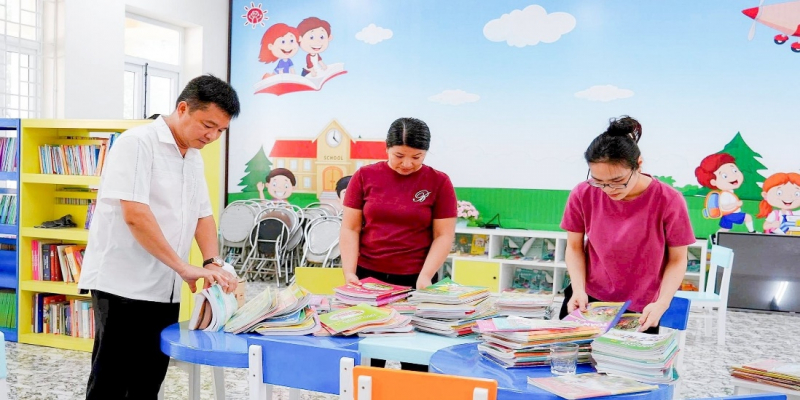
Education has always been considered the “top national policy” of Vietnam. For many decades, our country’s textbook system has operated under a single set mechanism compiled and published by the State. This approach has contributed to creating a unified knowledge and synchronizing teaching and learning programs nationwide.
However, according to Resolution 88/2014/QH13 of the National Assembly on curriculum innovation, general education textbooks have abandoned the monopoly on textbook publishing to allow many units to participate in compiling and publishing according to a common program. Since then, Vietnam has begun to socialize textbooks and at the end of 2018, the Ministry of Education and Training issued the 2018 General Education Program - one program, many sets of textbooks. This policy was initially expected to create healthy competition, diversify teaching materials and encourage creativity.
The implementation in recent years has shown positive aspects but also given rise to many shortcomings. On the positive side, many publishers and author groups have the opportunity to participate in the textbook compilation process; teachers and schools can choose books suitable to local conditions. But on the contrary, the three different textbook sets currently in circulation (Canh Dieu, Ket Ket Tri Thuc, Chan Troi Sang Tao) have led to a lack of consistency in teaching, and the curriculum of students between provinces and schools is uneven, causing regional gaps.
In addition, the existence of many sets of books has put parents under economic pressure when the price of new books is significantly higher than before; many sets cannot be reused because of annual revisions; parents in rural and mountainous areas are upset when their children have to buy a whole new set of textbooks, unable to reuse old books from previous classes as before. Many teachers have reported having to change and train continuously, wasting both time and effort.
Public opinion also raises the question: Is it necessary to have many sets of textbooks coexist? Practice shows that in countries with developed education systems, textbooks can be diverse or unified, but the important thing is to ensure fair access to knowledge for all students. In the context of Vietnam, there is still a large gap between urban and rural areas, lowlands and mountainous areas, a unified set of textbooks will help overcome inequality, creating fair learning opportunities for millions of students.
On August 22, 2025, the Central Executive Committee issued Resolution 71-NQ/TW, assigning the Ministry of Education and Training to preside over and coordinate with relevant ministries and agencies to develop a unified set of textbooks nationwide, applicable from the 2026-2027 school year and moving towards providing free textbooks to all students from 2030.
This is not only an administrative decision, but also a political and social commitment to building a fair and synchronous education system, aiming to reduce the financial burden on the people. This policy immediately received strong support from the masses.
Many parents expressed their agreement because they believed that a unified set of textbooks would reduce costs and avoid the situation of “chasing many sets of books”. Teachers at the grassroots level also expect stability, not having to constantly change materials. Students themselves will also benefit from studying in a unified environment, no longer in the situation of “different classes – common exams”.
However, in the face of this policy, there are still different opinions in public opinion, in which many people still want to diversify many sets of books as before. Taking advantage of that issue, hostile forces, political opportunists and ill-intentioned websites have distorted and spread arguments denying the policy, sowing doubts in society. It is possible to summarize a number of related viewpoints on unifying a set of textbooks, mainly revolving around the following basic issues:
Firstly, they argue that “one set of textbooks is going backwards, returning to the old model, many new sets of textbooks stimulate creativity, in line with international trends”. At first hearing, this seems to be a convincing point of view. Everyone thinks “more choices are better than fewer choices” but the reality is not that simple.
Up to now, there has been no scientific research to prove that “having many sets of textbooks” automatically improves the quality of education. The core of an education system lies in the output standards, the capacity of the teaching staff and teaching methods and the application of textbooks to the teaching program, not in the number of sets of textbooks.
In reality, the policy of “many sets of textbooks” originated from the desire for diversification, but when widely applied, it revealed shortcomings. In favorable areas, it was easy to access and choose; but in remote areas, the conditions were not met, and even if one wanted to use old or surplus books, one could not. Therefore, Resolution 71, which originated from the summary of 5 years of implementing many sets of textbooks, showed shortcomings and limitations that needed to be corrected. A set of textbooks is not a “regression” but a solution to establish long-term fairness and stability for the entire education system.
Second, regarding the opinion that a set of textbooks is just for the convenience of parents, not really necessary. But when we look closely, we will see a much deeper problem. If textbooks are not unified, students will have difficulty transferring schools between provinces and cities, and even have to start over from the beginning because the curriculum is different, and common exams can easily fall into a state of "deviation from standard".
And more worryingly, many students in remote areas do not have enough learning materials and are left behind. In other words, the inconveniences that parents report ultimately fall back on the students - the ones who directly suffer. Therefore, unifying a set of textbooks is not only to ease parents' worries, but more importantly, to ensure equal learning rights for all students nationwide.
Third, there is an opinion that using a set of textbooks will re-establish monopoly, affecting creativity. Hearing this argument is easy to worry, as if when there is only one set of books, monopoly will appear and innovation will be eliminated. First of all, it must be clearly affirmed that the issuance of a unified set of textbooks nationwide is a policy of the Party and the State, decided by the National Assembly and implemented by the Government, not an individual product of any group of authors or publishers. The State itself plays a leading role, responsible for ensuring publicity and transparency in the compilation, appraisal, issuance and use of textbooks. Therefore, saying that "a set of textbooks means monopoly" is incorrect.
Furthermore, it is necessary to distinguish textbooks as the minimum knowledge standard, not a limit to creativity. A common set of textbooks helps to establish a synchronous knowledge foundation nationwide. On that foundation, teachers have the right to flexibly innovate methods, use supplementary learning materials, information technology, and digital resources to enrich their lessons. The creativity of teachers and students is not bound by the number of textbooks, but is nurtured from the way teaching and learning is organized.
Finally, in the context of social justice, a unified set of textbooks is the condition to eliminate the risk of regional discrimination in education. Students from rural to urban areas, from mountainous to plain areas, all have access to the same knowledge system. That is not "eliminating creativity", but ensuring knowledge equity - the foundation of sustainable creativity.
Fourth, some people cite that "developed countries have many sets of textbooks, Vietnam goes against the trend" to attack and refute this major policy of the Party. However, it can be seen that such a comparison is very lame, because each country's education has its own characteristics. It is true that some countries such as Japan and Korea allow the existence of many sets of textbooks, but in reality, all sets of books must comply with the national education program and undergo very strict assessment by the State.
As for Vietnam, the policy of a single set of textbooks comes from the need for fairness and uniformity. This is to ensure that all students - whether studying in the city or the mountains, in favorable or difficult areas - have access to the same standard knowledge. This unity helps reduce inequality and avoid the situation of "strong schools choosing good books, weak schools choosing the remaining books". Not only that, not all places in the world have diverse textbooks. China, Singapore, France... all apply the model of centralized or tightly controlled textbooks and still achieve high educational achievements.
Thus, the issue is not “having one or many sets of textbooks”, but which model is most suitable for the context, goals and educational strategies of each country. For Vietnam today, a unified set of textbooks is a reasonable, feasible choice and ensures long-term benefits for the whole society.
Fifth, regarding the opinion that Resolution 71 is just a rigid administrative decision, lacking practical reference. This easily makes people think that this is an "administrative order", without consulting the people, but the truth is completely different. Important resolutions of the Party are all formed on the basis of advice from the governing ministry, summarizing practical experience, widely collecting opinions from scientists, experts, management agencies and society, then submitting to the Politburo for discussion and careful consideration before promulgation, and Resolution 71 is no exception. This is not a sudden decision, nor is it an imposition, but the result of a process of serious research, debate, and summary with high consensus in the entire education sector as well as in public opinion.
With Resolution 71, the vast majority of parents, teachers and students expressed their agreement, because they clearly understood the long-term benefits, reduced cost burden, created fairness in knowledge, and built a solid foundation for the younger generation. A common set of textbooks is not only an issue for the education sector, but also an affirmation: we are acting for the future of future generations, for a fair, progressive and developed education.
Inheriting current textbooks when building a unified textbook set
Sharing with CAND Newspaper reporters, Associate Professor Dr. Bui Manh Hung, main coordinator of the 2018 General Education Program Development Board, said: With Resolution 71 of the Politburo on breakthroughs in education and training development, the innovation of programs and textbooks has entered a new phase, from "one program, many textbooks" to "one program, one unified set of textbooks".
To have a unified set of textbooks, according to Mr. Hung, there can be at least 3 options: Organize the compilation of a completely new set of textbooks; choose one of the three existing textbook sets to be the common set of textbooks; choose a number of textbooks in each set of books to combine into a common set of textbooks.
Regarding the plan to compile a new set of textbooks, according to Mr. Hung, this plan opens up the hope of having a new and "standard" set of textbooks as many people wish, but compiling a completely new set of textbooks requires time to implement. Specifically, to compile a new set of textbooks for 12 grades, it takes about 4-5 years. The current sets of textbooks take 6 years to compile, lasting from 2018 to 2023, not including the preparation time of 1-2 years before that.
For option 2, choose one of the three existing textbooks, then edit it to make a common textbook set. This option not only ensures progress but also reduces waste of resources, significantly inherits teaching materials that have been tested and does not cause much disruption to teaching activities in schools. However, this is a difficult choice because all three textbook sets have been assessed and approved by the Ministry of Education and Training and have been widely used. If choosing a textbook set, it is necessary to provide scientific, objective, transparent and convincing criteria.
Regarding the third option, selecting a number of textbooks from each set of books to combine into a common set of textbooks, Mr. Hung said that this option has certain advantages, both meeting the requirements of progress and ensuring relative fairness between sets of books because every set of textbooks has textbooks for a number of selected subjects. However, the limitation of this option is that a unified set of textbooks may not ensure systematicity and consistency between subjects and between levels of education.
To ensure scientific and objectivity in the case of selecting a number of textbooks from each set of books to combine into a common set of textbooks, according to Mr. Hung, the combination can be done in two ways.
The first way is that textbooks for a subject at all three levels (Primary, Middle, High School) in the new textbook set are taken from a certain current textbook set, for example, textbooks for subject A are chosen from book set 1, textbooks for subject B are chosen from book set 2. This method has the advantage of ensuring consistency between the three levels, helping to overcome some of the limitations of the method of combining three sets of books.
The second way is that textbooks for a subject at all three levels in the new textbook set can be combined from textbooks of two or three sets of books depending on the advantages of each set of books at each level according to the criteria issued by the Ministry of Education and Training. This method has the advantage of being able to share books among the sets of books, but will cause textbooks for subjects that are not selected to be separated, and if they continue to be circulated, their usability will be quite limited.
Associate Professor Dr. Bui Manh Hung proposed that, regardless of the plan, the existing textbooks, in case they are not selected, in full sets or individual books, should continue to be circulated as a reference document to ensure diversity in teaching materials, an important condition for developing an "open and flexible education system" as affirmed in Resolution 29. This helps to mitigate the risk of the education system returning to the old curriculum and textbook model, returning to a teaching method framed in a single approach, while creating conditions for continued innovation in testing and assessment.
Huyen Thanh
Source: https://cand.com.vn/giao-duc/su-can-thiet-thuc-hien-thong-nhat-mot-bo-sach-giao-khoa-i782538/



![[Photo] Hanoi morning of October 1: Prolonged flooding, people wade to work](https://vphoto.vietnam.vn/thumb/1200x675/vietnam/resource/IMAGE/2025/10/1/189be28938e3493fa26b2938efa2059e)




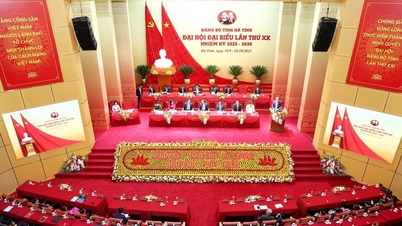

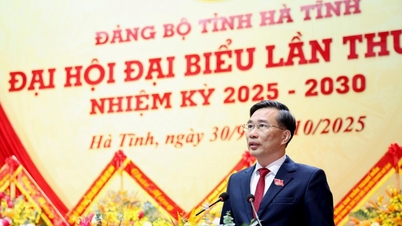
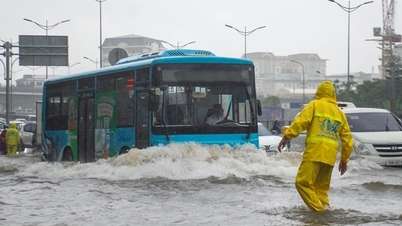


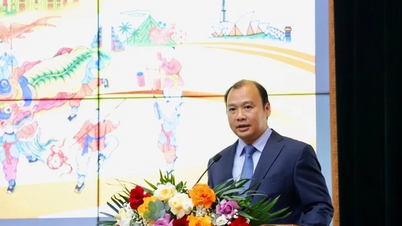









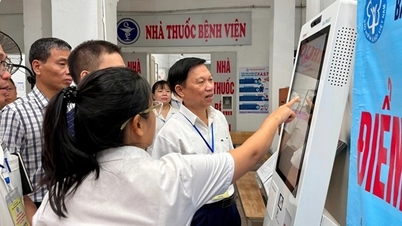

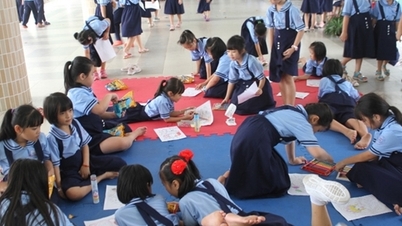

![[Photo] Panorama of the cable-stayed bridge, the final bottleneck of the Ben Luc-Long Thanh expressway](https://vphoto.vietnam.vn/thumb/1200x675/vietnam/resource/IMAGE/2025/9/30/391fdf21025541d6b2f092e49a17243f)





























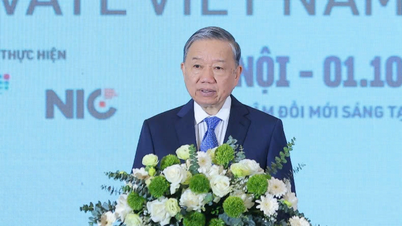










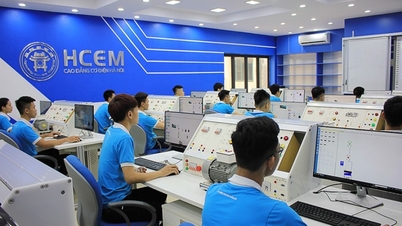
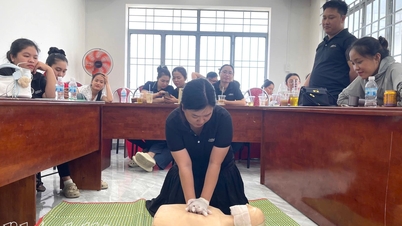

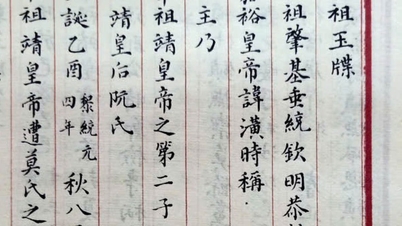

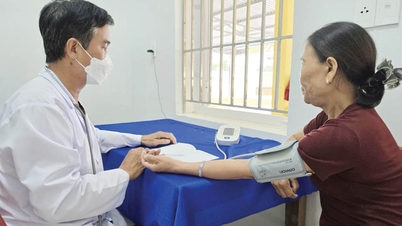














Comment (0)